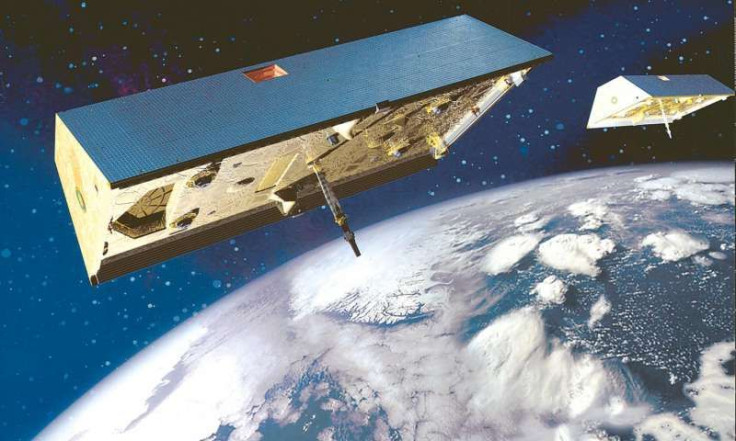NASA To Decommission GRACE Satellites 15 Years After Launch

NASA will be decommissioning the Gravity Recovery and Climate Experiment (GRACE) satellite duo in November, 15 years after they were launched.
In a statement released Sept. 14, NASA’s Jet Propulsion Laboratory (NASA JPL) said the two spacecraft would be decommissioned after one final science collection scheduled for mid-October through early November.
The GRACE twin-satellites launched March 17, 2002, on a Russian Rockot vehicle under contract, is a coalition mission between German Aerospace Center (DLR) and NASA.
The satellites, named GRACE 1 and 2, operate in a low-Earth orbit with a distance of 220 kilometers between them. In the 15 years since launch, the satellites have aided in making many scientific discoveries about Earth, especially understanding the movement and storage of water on the planet.
The distance between the two satellites enabled scientists to monitor two areas and study the variations in gravitational field caused by mass changes on Earth.
These small changes in mass were used to track the motion of water on Earth and study seasonal and climatic patterns.
Until the launch of Grace, scientists couldn't study the movement of water based on changes in mass.
"GRACE enabled tracking the movement of water via its mass, a field which was not available in spaceborne remote sensing and which opened new options to monitor and quantify climate change," said Reinhard Hüttl, the chairman of the Board and Scientific Executive Director of the Helmholtz Centre Potsdam - GFZ German Research Centre for Geosciences in a phys.org report.
After overshooting their mission period by over 10 years, the satellites finally started to age, encountering a spate of problems recently.
Controllers lost contact with GRACE-2 on Sept. 4, after eight of the 20 on-board batteries failed, and communications were restored on Sept. 8 after the battery resumed operations at full voltage.
The battery issues coupled with the satellite running out of fuel has spurred to decision to decommission them.
The decommissioning will involve maneuvering the satellites to eliminate any chance of collision. After the spacecraft are rendered inert, they will begin its uncontrolled reentry into the atmosphere. Most of each spacecraft will burn up upon reentry.
“A few small pieces are expected to survive reentry and reach the ground, but the risk they pose is very small and is within NASA requirements for satellite reentry,” NASA spokesperson Alan Buis said in a SpaceNews report.
The replacement satellites known as GRACE Follow On, or GRACE-FO are also a joint German-American project. They have been upgraded with a laser Interferometer for more accurate measurements.
The GRACE-FO’s were scheduled to be launched on a Dnepr rocket from the Baikonur Cosmodrome in Kazakhstan. But, getting the Russian governments’ approval for launches of the Ukrainian-built rocket has been an issue since 2015.
Now, the GRACE-FO satellites will be carried by SpaceX’s Falcon 9 launches purchased by Iridium and GFZ.
Iridium has a previous tie-up with SpaceX for the Falcon 9. Seven of their satellites are set to enter orbit on the SpaceX rockets and the GRACE-FO has been added to the Falcon bandwagon.
Though a launch date for the joint Iridium/GRACE-FO mission has not been set, NASA JPL said that it is expected in early 2018.
© Copyright IBTimes 2025. All rights reserved.




















